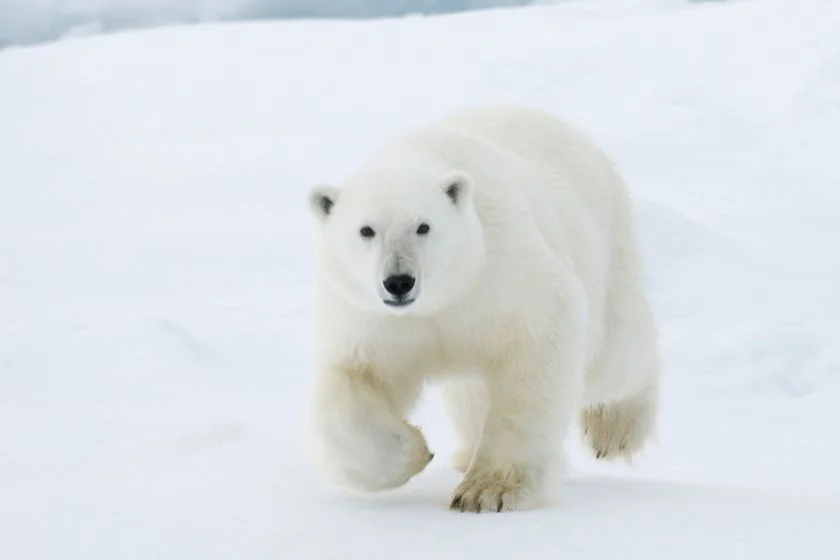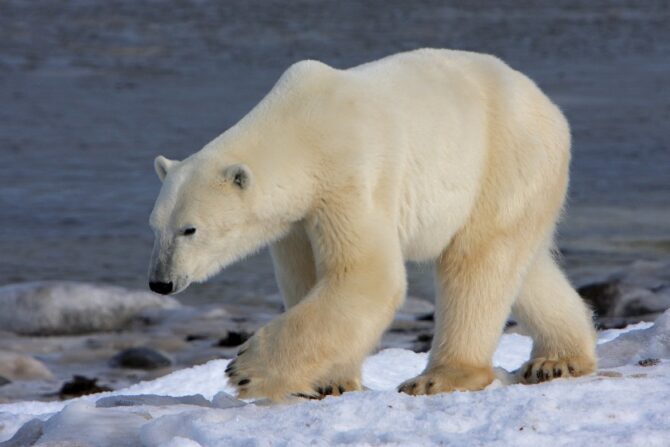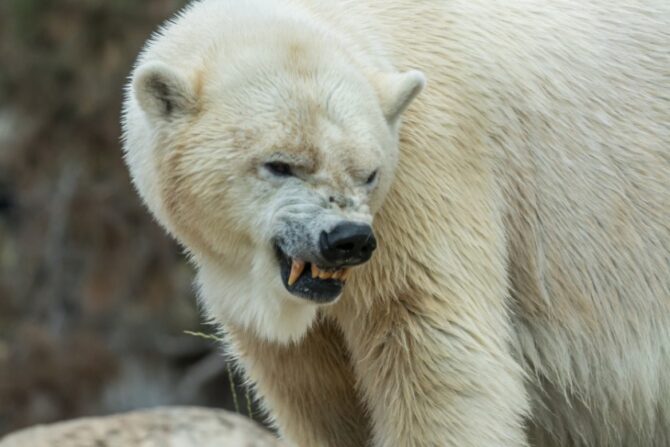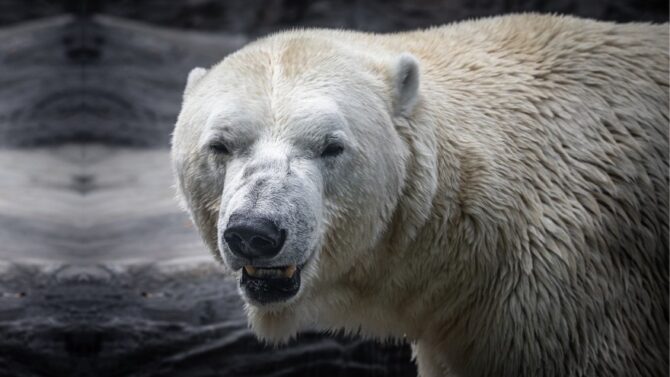Hikers tend to research the best ways to avoid bears, but often, those researches focus on the grizzly and black bear as these are the species you’re more likely to meet.
These creatures live in arctic areas, so how would you ever come across one?
Due to the effects of climate change and more individuals becoming adventurous in the arctic regions, things have changed.
This is why you need to know how to survive a polar bear attack.
Polar bear attacks are more possible now than ever. If you plan on exploring the arctic regions, the chances of encountering them are higher now.1
The polar bear is dangerous, but you can survive an attack from this animal with some right steps, including holding bear spray and keeping calm.
Read on to learn how to fend off polar bears and ways to prevent an encounter with them.
What to Know About Polar Bears

Polar bears (Ursus maritimus) are members of the Ursidae family, related to the brown and black bears, which are more common.
With a weight of up to 1,500 pounds, the polar bear is both the largest bear and the largest living land mammal.2
As its name implies, it has adapted to cold regions and lives in the artic.
Polar bears feed more on seals that are spread out in their region.
This makes them carnivorous, unlike their bear counterparts, that are considered omnivores.
These bears live more on sea ice and are excellent swimmers. This explains why their scientific name Ursus maritimus translates as “sea bear.”
The polar bear is classified as vulnerable by the IUCN due to habitat loss caused by climate change.
Are Polar Bears Dangerous?

As strong predators, polar bears are highly dangerous.
Unlike other bear species that attack humans only when provoked, polar bears consider humans as prey and may act in a like manner.
That said, the polar bear is not an active hunter of humans and may not get on land to seek us out. Its preferred diet is a seal.
We’ve mentioned that climate change and an increased interest in exploring the artic have led to clashes between the polar bear and humans.
Reports have shown an upward trend in years, and though the number of casualties isn’t as much as some other predators, it is concerning.3
The polar and grizzly are the most dangerous bear species.
How to Survive a Polar Bear Attack – 6 Effective Tips

Below are the essential guide for surviving a polar bear attack:
1. Arm yourself with a bear spray
The best tool to hold when you’re in an area that may house a polar bear (or any other bear species) is bear spray.
This repellent often serves to discourage the approaching bear from coming further.
Bear spray is the most effective way to keep a bear away.
2. Remain calm, and don’t run
Polar bears may look heavy, but they gain ground while running.
They can easily outrun a human, and because of their hunting instinct, they’re more likely to give chase.
Panicking also makes you unable to focus on survival.
3. Watch for signs
Polar bears often approach out of curiosity, and from that moment, you should be observant of signs that they’re interested in you.
An example is sniffing the air like you’re their next prey. If it hasn’t yet noticed you, move in another direction.
4. Stay Downwind
One way to avoid being detected by a polar bear (or at least buy yourself some time) is to stay downwind.
This means you should ensure that the wind is blowing on your face, not coming from behind.
This way, your scent won’t be picked up with ease.
5. Don’t play dead
Playing dead can only work for a grizzly. A polar bear bent on hunting you down would simply proceed with its mission.
If the polar bear detects you and is approaching, the best solution is to fight back.
This is why you should not go on these trips alone. It’s easier to push back as a group than individually. It’ll be hard to fight it off alone.
6. Try to scare it away
The polar bear is more likely to see you as prey if you look very fragile.
You’d need to show you are not by shouting, flailing your arms, or standing on a rock to make yourself look bigger than the bear.
Again, it is better to be in a group than alone as that increases your chances of survival.
Hopefully, you’re not reading this standing alone facing a polar bear.
Related: How To Survive A Bear Attack (Black, Brown & Grizzly Bears)
Can I Avoid Polar Bears?
Overall, it is better to learn how to avoid a polar bear than to be caught trying to survive.
Polar bears are dangerous, and chances of survival are low. It is easier to prevent getting into an altercation than to get out of the situation.
Because it is more likely to meet a polar bear now in the Artic, knowing how to avoid these creatures is paramount.
Here are some tips:
- Avoid driving at night in a place known to have polar bears.
- Polar bears are often around seals, so you should stay away from areas with seals in them.
- Stay away from polar bear den sites.
- Before setting up camp, observe the area for any signs of polar bears.
- When sleeping in the open, use a tent.
Final Thoughts
Polar bears are dangerous animals and hard to escape from, but surviving is possible with bravery, calmness, and the advantage of numbers.
Using bear pepper spray and loud sounds also assists in pushing the bear away.
The best thing to do is to avoid it when you’re on an adventure in an area with polar bears.
References & Notes
- Polar bears and people. WWF Arctic.
- Polar bears: The largest land carnivores. Live Science.
- Polar Bear Attacks, Causes, Prevention. Polar Bears International.






